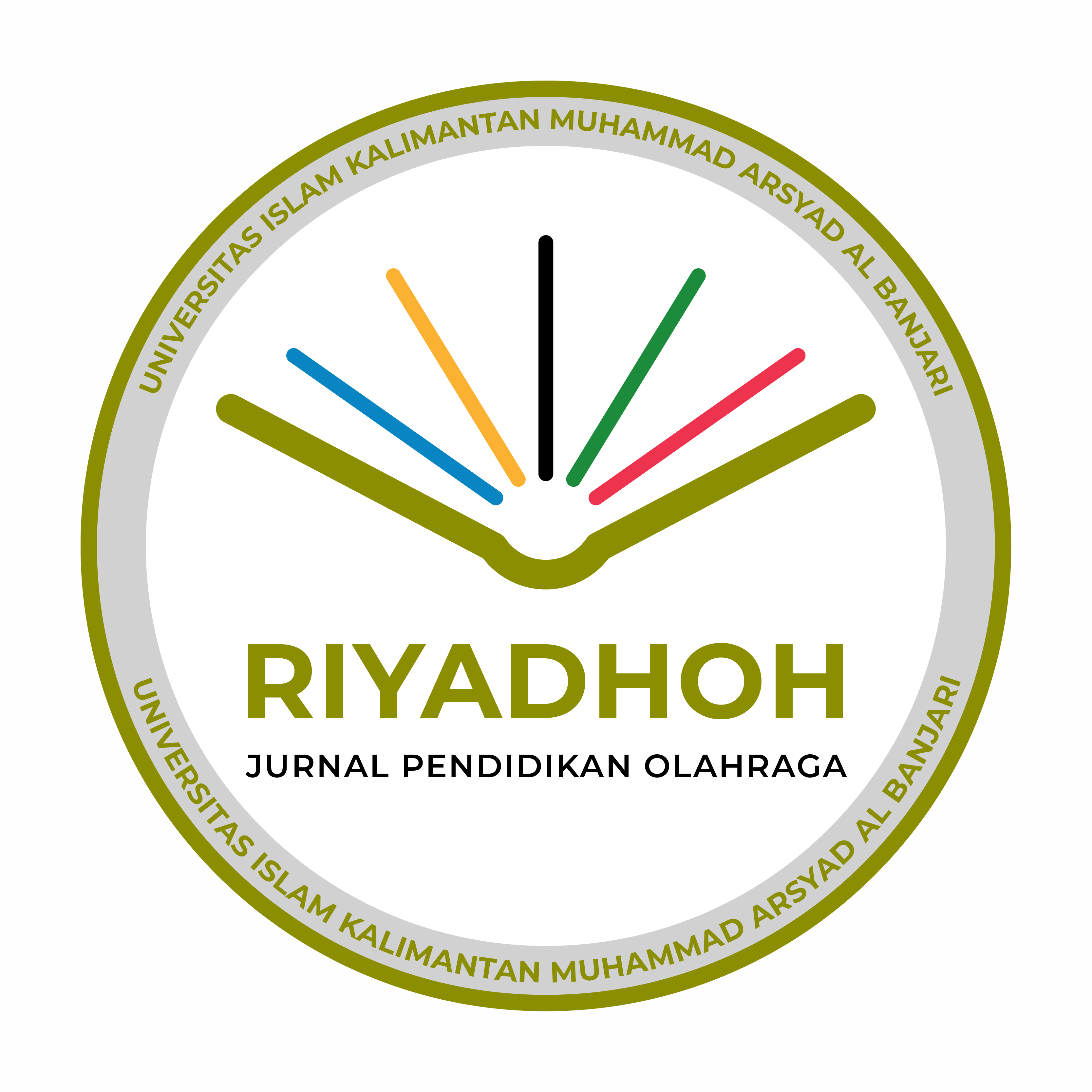PENGARUH LATIHAN INTERVAL DAN MOTIVASI UNTUK MENINGKATKAN VO2MAX PADA ATLET FUTSAL
(1) Universitas Suryakancana
(2) Universitas Suryakancana
(3) Universitas Suryakancana
(4) PJKR, FIK, Universitas Negeri Jakarta
(*) Corresponding Author
Sari
This study aims to determine the effect of Interval Training and Motivation on increasing Vo2Max ability. The implementation of the research took place during the training process planned from June 2021 to August 2021. The research time was 2 months, the number of exercises was 18 meetings, with a frequency of 1 week 3 times. The research design used in this study is (pretest-posttest control group design). The results of this study have the effect of interval training and motivation on increasing Vo2max. The test results with the value of the interval training results 0.00 < 0.05 are declared significant, so interval training before and before being given treatment can be concluded that so from the results obtained that Interval Running Exercises have an effect on VO2max then the test results on training without exercise obtained 0.02 < 0.05, it is stated significant with exercise without exercise before being given treatment can guarantee that exercise without training methods has an effect on VO2max but it can be said that interval training has a more significant effect on increasing VO2max for athletes futsal.
Kata Kunci
Teks Lengkap:
PDFReferensi
Barcelos, R. P., Tocchetto, G. L., Lima, F. D., Stefanello, S. T., Rodrigues, H. F. M., Sangoi, M. B., Moresco, R. N., Royes, L. F. F., Soares, F. A. A., & Bresciani, G. (2017). Functional and biochemical adaptations of elite level futsal players from Brazil along a training season. Medicina (Lithuania), 53(4), 285–293.
https://doi.org/10.1016/j.medici.2017.08.001
Dal Pupo, J., Detanico, D., Arins, F. B., Nascimento Salvador, P. C., Guglielmo, L. G. A., & dos Santos, S. G. (2017). Capacidade de sprints repetidos e níveis de potência muscular em jogadores de futsal das categorias sub 15 e sub 17. Revista Brasileira de Ciencias Do Esporte, 39(1), 73–78.
https://doi.org/10.1016/j.rbce.2016.01.010
Davies, J. K. (2002). Renegade Tr a i n i n g For Football. files/2389/Davies - 2002 - Renegade Training for Football The Ultimate Guide.pdf
de Oliveira, R. S., Borin, J. P., Fernandes, P. T., Uchida, M. C., & Borges, T. de O. (2019). Description of 18 weeks integrated training on the displacement speed in Brazilian futsal players. Revista Brasileira de Ciencias Do Esporte, 41(3), 308–313.
https://doi.org/10.1016/j.rbce.2018.06.001
Keshvari, B., & Senner, V. (2015). Comparison of shoe-surface tractions on various playing surfaces in futsal. Procedia Engineering, 112, 267–272.
https://doi.org/10.1016/j.proeng.2015.07.245
Matzenbacher, F., Pasquarelli, B. N., Rabelo, F. N., & Stanganelli, L. C. R. (2014). Physiological demands of futsal competition. Physical and physiological characteristics of professional players. Revista Andaluza de Medicina Del Deporte, 7(3), 122–131.
https://doi.org/10.1016/S1888-7546(14)70074-7
Müller, E. S., da Costa, I. T., & Garganta, J. (2018). Tactical analysis in futsal: comparative study of performance by players from four age levels. Revista Brasileira de Ciencias Do Esporte, 40(3), 248–256. https://doi.org/10.1016/j.rbce.2016.01.015
Naser, N., Ali, A., & Macadam, P. (2017). Physical and physiological demands of futsal. Journal of Exercise Science and Fitness, 15(2), 76–80. https://doi.org/10.1016/j.jesf.2017.09.001
Nogueira, F. C. d. A., de Freitas, V. H., Nogueira, R. A., Miloski, B., Werneck, F. Z., & Bara-Filho, M. G. (2018). Mejora del rendimiento físico, perfil hormonal, balance estrés-recuperación y aumento del daño muscular basado en la planificación específica de pretemporada en el fútbol sala. Revista Andaluza de Medicina Del Deporte, 11(2), 63–68. https://doi.org/10.1016/j.ramd.2015.11.008
Rezaimanesh, D., Amiri-Farsani, P., & Saidian, S. (2011). The effect of a 4 week plyometric training period on lower body muscle EMG changes in futsal players. Procedia - Social and Behavioral Sciences, 15, 3138–3142. https://doi.org/10.1016/j.sbspro.2011.04.260
Silva, W. R. da, Freitas, K., de Carvalho, H., Ferrari, E., Vieira, M., & Cardoso, F. L. (2018). Satisfaction with life and subjective social status in athletes of indoor soccer and soccer. Revista Brasileira de Ciencias Do Esporte, 40(4), 374–380.
https://doi.org/10.1016/j.rbce.2018.02.001
Sole, C. J. (2018). Plyometric training. In Advanced Strength and Conditioning. https://doi.org/10.4324/9781315542348-16
Teatro, C., Thompson, M., Kulinna, P. H., Van Der Mars, H., & Kwan, J. Y. (2017). Coaching behaviors and stakeholders’ views of coaches’ efficacy. International Journal of Sports Science and Coaching, 12(4), 452–460. https://doi.org/10.1177/1747954117718094
Varkiani, M. E., Alizadeh, M. H., & Pourkazemi, L. (2013). The Epidemiology of Futsal Injuries Via Sport Medicine Federation Injury Surveillance System of Iran in 2010. Procedia - Social and Behavioral Sciences, 82, 946–951.
https://doi.org/10.1016/j.sbspro.2013.08.001
Tudor O. Bompa, G. Gregory Haff.
DOI: http://dx.doi.org/10.31602/rjpo.v6i1.10998
Refbacks
- Saat ini tidak ada refbacks.
Index Jurnal :
Didedikasikan Untuk:


Riyadhoh : Jurnal Pendidikan Olahraga disebar luaskan oleh : Lisensi Creative Commons Atribusi 4.0 Internasional.









.jpg)





